Test Bank for Inquiry into Physics 7th Edition Vern J Ostdiek Download
$38.00
Title: Test Bank for Inquiry into Physics 7th Edition Vern J Ostdiek Download
Edition: 7th Edition
ISBN-10: 1133104681
ISBN-13: 978-‘1133104681
- Description
- Reviews (0)
Description
You will receive this product immediate after placing the order
***THIS IS NOT THE ACTUAL BOOK. YOU ARE BUYING the Test Bank in e-version of the following book***
Title: Test Bank for Inquiry into Physics 7th Edition Vern J Ostdiek Download
Edition: 7th Edition
ISBN-10: 1133104681
ISBN-13: 978-‘1133104681
– The test bank is what most professors use an a reference when making exams for their students, which means there’s a very high chance that you will see a very similar, if not exact the exact, question in the test!
– The file is either in pdf, doc, rtf or zipped in the package and can easily be read on PCs and Macs.
– Delivery is INSTANT. You can download the files IMMEDIATELY once payment is done.
We also faced similar difficulities when we were students, and we understand how you feel.
But now, with the Test Bank for Inquiry into Physics 7th Edition Vern J Ostdiek Download, you will be able to
* Anticipate the type of the questions that will appear in your exam.
* Reduces the hassle and stress of your student life.
* Improve your studying and also get a better grade!
* Get prepared for examination questions.
* Can save you time and help you understand the material.
This is the quality of service we are providing and we hope to be your helper.
Delivery is in the next moment. Test Bank is accurate.
If you have any questions, or would like a receive a sample chapter before your purchase, please contact us at inquiry@testbanksafe.com
Chapter 1: The Study of Motion
TRUE/FALSE
1. A vector quantity has only a magnitude and no direction associated with it.
ANS: F PTS: 1
2. Speed can sometimes be negative.
ANS: T PTS: 1
3. Motion in a circle at constant speed is motion with constant acceleration.
ANS: F PTS: 1
4. Motion in a circle at constant speed is motion with constant velocity.
ANS: F PTS: 1
5. Uniform motion is any motion at constant speed.
ANS: F PTS: 1
6. The terms velocity and speed have identical meanings in physics.
ANS: F PTS: 1
7. If an object’s speed is constant, its velocity must also be constant.
ANS: T PTS: 1
8. If an object’s velocity is constant, its speed must also be constant.
ANS: T PTS: 1
9. The proper abbreviation for ‘seconds’ is ‘sec.’
ANS: F PTS: 1
10. The proper abbreviation for ‘grams’ is ‘g.’
ANS: T PTS: 1
11. The proper abbreviation for ‘kilohertz’ is ‘kHz.’
ANS: T PTS: 1
12. The metric prefix that means one thousand is milli-.
ANS: F PTS: 1
13. Twenty milliseconds is 0.020 s.
ANS: T PTS: 1
14. There are one thousand megabytes in a gigabyte.
ANS: T PTS: 1
15. The second is a metric unit of measure.
ANS: T PTS: 1
16. The number of cycles of a periodic process that occur per unit time is called the period.
ANS: F PTS: 1
17. The time for one complete cycle of a periodic process to take place is called the period.
ANS: T PTS: 1
18. The period of oscillation for a signal having a frequency of 60 Hz is 60 seconds.
ANS: F PTS: 1
19. The maximum possible speed in nature is the speed of light.
ANS: T PTS: 1
20. Experimenting is part of the scientific method.
ANS: T PTS: 1
21. A body at the end of a spring oscillates up and down ten times in five seconds. The period of oscillation is 2 s.
ANS: T PTS: 1
22. The slope of a distance vs. time graph is the acceleration.
ANS: F PTS: 1
23. The slope of a velocity vs. time graph is the acceleration.
ANS: T PTS: 1
24. An object moving in a circle undergoes centripetal acceleration.
ANS: T PTS: 1
25. If an object’s acceleration is positive, its speed must be increasing.
ANS: F
It could have a negative velocity that is getting less negative, which corresponds to a decreasing speed.
PTS: 1
26. A fast-moving body must have a larger acceleration than a slow-moving body.
ANS: F PTS: 1
27. An aircraft approaches a runway that runs directly east as a strong wind blows out of the south. The direction that the aircraft should aim in order to land is east of north.
ANS: F PTS: 1
28. The velocity of the moving object is a non-zero constant.
ANS: T PTS: 1
29. The acceleration of the moving object is a non-zero constant.
ANS: F PTS: 1
30. The velocity of the moving object is a non-zero constant.
ANS: F PTS: 1
31. The acceleration of the moving object is a non-zero constant.
ANS: T PTS: 1
32. The object’s velocity is zero in region II.
ANS: T PTS: 1
33. The object’s velocity is positive in region II.
ANS: F PTS: 1
34. The object’s velocity is never negative.
ANS: F PTS: 1
35. The object’s acceleration is zero only in region II.
ANS: F PTS: 1
36. The object’s acceleration is negative in region III.
ANS: F PTS: 1
37. The object is never at rest.
ANS: F PTS: 1
38. The object’s speed is greatest in region I.
ANS: F PTS: 1
39. As the ball is going upwards the velocity and acceleration both point up.
ANS: F PTS: 1
40. At the peak of the motion the velocity and acceleration are both zero.
ANS: F PTS: 1
41. As the ball is going downwards the velocity and acceleration both point down.
ANS: T PTS: 1
42. When a body moves in circular motion at constant speed the velocity and acceleration point in opposite directions.
ANS: F PTS: 1
43. The distance from the starting point is 16 m.
ANS: F PTS: 1
44. The velocity acquired after starting from rest is 8 m/s.
ANS: T PTS: 1
45. The acceleration after starting from rest is 8 m/s2.
ANS: F PTS: 1
46. A racecar goes around a 200 m radius curve at a constant speed of 40 m/s. Its acceleration is 8 m/s2.
ANS: T PTS: 1
47. A racecar driver steps on the gas, changing his speed from 10 m/s to 30 m/s in 4 seconds. The acceleration of the racecar is 10 m/s2.
ANS: F PTS: 1
48. A racecar driver steps on the gas, and his racecar travels 20 meters in 2 seconds starting from rest. The acceleration of the racecar is 5 m/s2.
ANS: F PTS: 1
MULTIPLE CHOICE
1. Which of these are fundamental physical quantities?
a. space, time, and matter c. length, time, and mass
b. kilograms, seconds, and meters d. momentum, energy, and mass
ANS: C PTS: 1
2. What is the proper abbreviation for ‘seconds?’
a. sec
b. There is none. It should always be spelled out.
c. secs
d. s
e. none of the above
ANS: D PTS: 1
3. What is the proper abbreviation for ‘kilohertz?’
a. kh
b. khz
c. Khz
d. KHz
e. kHz
ANS: E PTS: 1
4. What is the proper abbreviation for ‘grams?’
a. g
b. gms
c. gm
d. gr
e. kg
ANS: A PTS: 1
5. The metric prefix that means one thousand is
a. milli-
b. centi-
c. one-
d. kilo-
e. mega-
ANS: D PTS: 1
6. Twenty milliseconds is
a. 0.00002 s
b. 0.0002 s
c. 0.002 s
d. 0.02 s
e. 20000 s
ANS: D PTS: 1
7. Fifteen microseconds is
a. 0.0000015 s
b. 0.000015 s
c. 0.00015 s
d. 0.015 s
e. 15000000 s
ANS: B PTS: 1
8. Twenty kilometers is
a. 200,000 m
b. 20,000 m
c. 2,000 m
d. 200 m
e. 0.02 m
ANS: B PTS: 1
9. Two microcuries is
a. 200,000 Ci
b. 0.0002 Ci
c. 0.00002 Ci
d. 0.000002 Ci
e. 0.00000002 Ci
ANS: D PTS: 1
10. How many megabytes are there in a gigabyte?
a. 10 c. 1000000
b. 1000 d. none of the above
ANS: B PTS: 1
11. In expressions like Dv and Dt, D stands for
a. “change in” c. a constant of proportionality
b. “triangle” d. a variable
ANS: A PTS: 1
12. The number of cycles of a periodic process that occur per unit time is called
a. amplitude
b. frequency
c. period
d. wavelength
e. speed
ANS: B PTS: 1
13. The time for one complete cycle of a periodic process to take place is called
a. amplitude
b. frequency
c. period
d. wavelength
e. speed
ANS: C PTS: 1
14. A body at the end of a spring oscillates up and down ten times in five seconds. The period of oscillation is
a. 0.5 s
b. 2 s
c. 5 s
d. 10 s
e. not determinable
ANS: A PTS: 1
15. What is the period of a signal that has a frequency of 60 Hz?
a. 60 s c. 1/60 s
b. 60 s-1 d. not determinable
ANS: C PTS: 1
16. The slope of a distance vs. time graph is the
a. distance c. acceleration
b. velocity d. none of the above
ANS: B PTS: 1
17. The slope of a velocity vs. time graph is the
a. distance c. acceleration
b. velocity d. none of the above
ANS: C PTS: 1
18. An object moving in a circle undergoes
a. constant acceleration
b. free fall
c. centripetal acceleration
d. linear acceleration
e. frequency
ANS: C PTS: 1
19. Motion in a circle at constant speed is motion with
a. constant acceleration c. both of the above
b. constant velocity d. none of the above
ANS: D
Both v and a are continuously changing direction and therefore not constant.
PTS: 1
20. An aircraft approaches a runway that runs directly east as a strong wind blows out of the south. The direction that the aircraft should point in order to land on the runway is
a. north
b. east of north
c. east
d. south of east
e. south
ANS: D PTS: 1
21. GPS stands for
a. the metric system of measurement
b. grams per second
c. Global Positioning System
d. a space shuttle
e. none of the above
ANS: C PTS: 1
22. Instantaneous speed and average speed are equal
a. always c. for accelerated motion
b. for motion at constant speed d. never
ANS: B PTS: 1
23. If the velocity of an object is negative,
a. its speed is decreasing
b. its velocity does not exist
c. it is reversing direction
d. it is moving in the direction labeled negative
ANS: D PTS: 1
24.
The sum of vectors A and B is
a. c.
b. d.
ANS: C PTS: 1
25. The velocity of the moving object is
a. zero
b. constant
c. increasing
d. decreasing
e. not determinable
ANS: B PTS: 1
26. The acceleration of the moving object is
a. zero
b. constant
c. increasing
d. decreasing
e. not determinable
ANS: A PTS: 1
27. The velocity of the moving object is
a. zero
b. constant
c. increasing
d. decreasing
e. not determinable
ANS: C PTS: 1
28. The acceleration of the moving object is
a. zero
b. constant
c. increasing
d. decreasing
e. not determinable
ANS: B PTS: 1
29. The object’s velocity is zero in region(s)
a. I c. III
b. II d. no regions
ANS: B PTS: 1
30. The object’s velocity is positive in region(s)
a. I c. III
b. II d. no regions
ANS: A PTS: 1
31. The object’s velocity is negative in region(s)
a. I c. III
b. II d. no regions
ANS: C PTS: 1
32. The object’s acceleration is negative in region(s)
a. I c. III
b. II d. no regions
ANS: D PTS: 1
33. The object is at rest in region(s)
a. I c. III
b. II d. no regions
ANS: B PTS: 1
34. The object’s speed is greatest in region(s)
a. I c. III
b. II d. no regions
ANS: C PTS: 1
35. As the ball is going upwards
a. the velocity and acceleration both point up
b. the velocity points up and the acceleration down
c. the velocity points down and the acceleration up
d. the velocity and acceleration both point down
e. the acceleration is zero
ANS: B PTS: 1
Be the first to review “Test Bank for Inquiry into Physics 7th Edition Vern J Ostdiek Download”
You must be logged in to post a review.

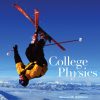
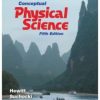
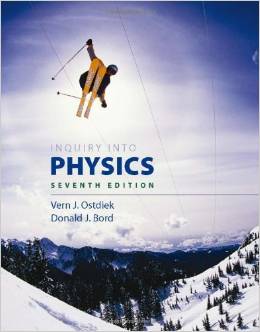
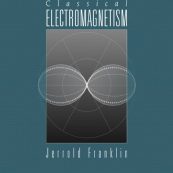
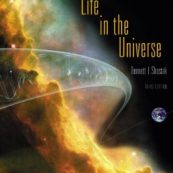
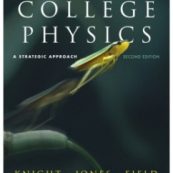
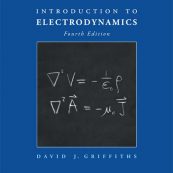
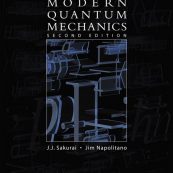
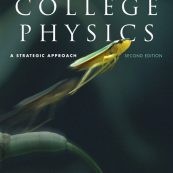
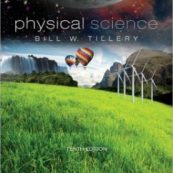
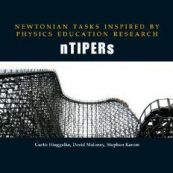
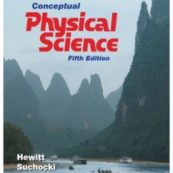
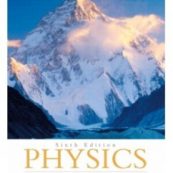
Reviews
There are no reviews yet.